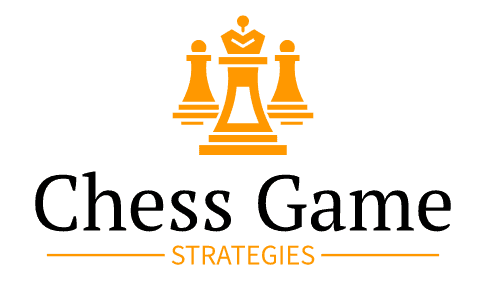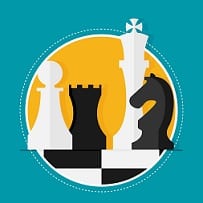
So, to summarize the correct Chess Board Layout, look at the following graphical image of a standard Chessboard (when I say ‘standard’, it’s discounting Chess variants, such as the board you get in 4-way Chess):
Virtually all beginners see the Chessboard as a checkered assembly of 64 squares, upon which you and your opponent put your pieces and, somehow, try to capture the enemy before winning by something called “Checkmate”.
We deal with how to play the game elsewhere. Here, we’ll answer your query about the Chess Board Layout. First, orientation – making sure the Board is facing the right way up …
The Chessboard: Right Way Up
The correct orientation is to make sure there’s a light-square, in the bottom-right corner of the Chessboard, as you sit facing it. And that takes care of putting the Board the right way up.
Next, we’ll see where to put the Pawns and Pieces, at the start of each game …
The Chessboard: Where the Pawns and Pieces Start
Whether you’re playing as Black or White, the Pawns go on the second row (Rank) up … As for the Pieces, they go on the very bottom Rank – also known as the “Back Rank”.
So, that’s the orientation and placement of your material taken care of … The last aspect of the Chess Board Layout we’ll cover is to do with splitting the Board into imaginary “Zones” …
The Chessboard: Zones
Knowing the Chessboard can be split up into different Zones will help later on, when it comes to both Strategy planning and Tactics.
The Board can be split into five zonal groups:
- Ranks vs Files;
- Queenside vs Kingside;
- White’s Territory vs Black’s Territory;
- Center vs Small Center;
- The Flanks.
Zones: 1. Ranks vs Files
What you might originally call “rows”, you’ll now refer to as “Ranks“.
What you might originally call “columns”, you’ll now refer to as “Files“.
- Ranks are identified by numbers (‘1‘ up to ‘8‘);
- Files are identified by letters (‘a‘ across to ‘h‘).
The alpha-numeric system will be called into action later, when you learn about the Algebraic Chess Notation system, for recording moves, captures, etc. (See our Beginners Chess Guide article, “Annotated Chess“, for more).
Zones: 2. Queenside vs Kingside
“Kingside” and “Queenside” are the most commonly known of the zonal, chess board layout terms. This zonal group splits the Board down the middle; the left half of the Chessboard is referred to as the “Queenside”, since that’s the side both Queens start each game … Knowing that, I’ll leave you to work out “Kingside”.
Zones: 3. White’s Territory vs Black’s Territory
We can also bisect the Chessboard along a horizontal plane, which allocates 32 squares of Territory for both Black and Whites armies respectively, at the beginning of each game.
As you work your way through our Beginners Chess Guide, you’ll get to the subject matter known as “The Principle of Space”, which deals identifying territorial advantages.
Zones: 4. Center vs Expanded Center
Most often, the player who controls the Center is better equipped to dictate the battle.
Similar to controlling the top of a hill, or the highground, in real wars, the Small Center represents greater control of the two territories.
Zones: 5. The Flanks
If you can’t fight your way through the Center, you’ll have to make do with attacking down the sides of the Chessboard. These zones are referred to as the “Flanks”.
Remember this term as, at some stage, you’ll be finding out about “Flank Openings” and “Flank Attacks”. You should now have a better idea of their meaning.
Okay, that takes care of the fundamentals of the Chess Board Layout. For increased understanding, pop along to our Beginners Chess Guide.









